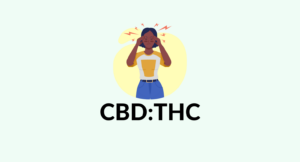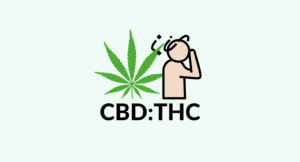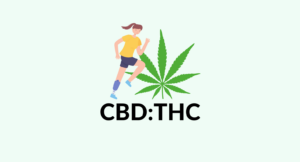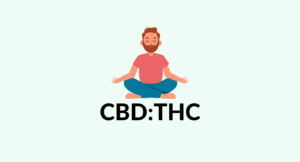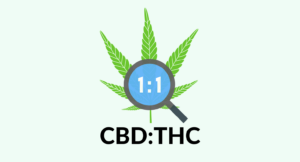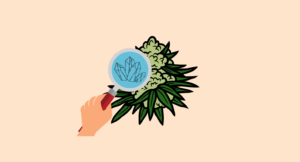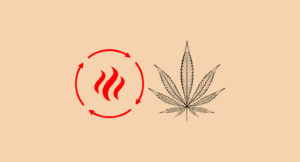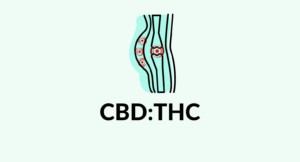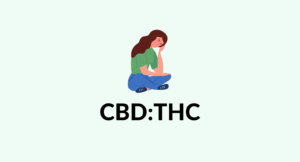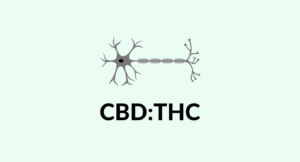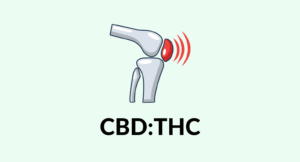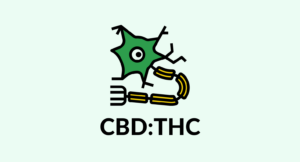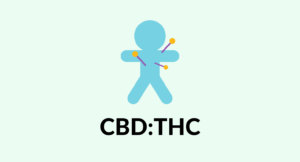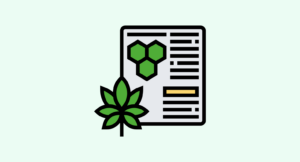
Evidence based
Can You Microdose THC & Marijuana?
Learn how people are taking sub-psychoactive doses of THC to boost focus & concentration, ease pain, & improve health & wellbeing.
Weed has a lot of benefits to offer, but the psychoactive effects can make you unfit to drive, make you feel anxious, and interfere with your ability to perform at work.
Today, there’s a new trend emerging in which users take small, non-psychoactive doses of marijuana.
In the US, the sale of low-dose THC products (contains less than 2.5 mg of THC) jumped nearly 45% last year (2020). We saw almost 28 new low-dose marijuana products introduced to the market by some of the industry’s biggest brands.
Is there any merit to the new trend of taking sub-perceptual doses of THC? How about CBD?
In this guide, we’ll cover everything you need to know about microdosing marijuana and THC products. You’ll how much to take, what forms to use, and how CBD can help make your microdose even stronger.
What is Microdosing?
Microdosing is the practice of taking sub-perceptual doses of a particular substance. It’s most commonly used for psychedelics like magic mushrooms or LSD as a way to improve creativity, promote flow states, and create a greater sense of empathy.
Marijuana is not a psychedelic, but there are benefits to taking microdoses of the plant as well. It involves taking doses of marijuana that are too low to make the user feel high but high enough to cause other, more subtle changes in neurological function.
The biggest risk of microdosing marijuana or THC products is taking too much. If this happens, you’ll feel high, which can end up having opposite effects from what you were trying to accomplish.
In order to be successful with microdosing marijuana is to take it slowly. Take less than you think you’ll need, and give it time to take effect.
It also helps if you’re already familiar with the effects of THC and know what dose makes you feel high and what doesn’t.

What Are the Benefits of Low-Dose Marijuana?
A lot of people are under the false impression that higher doses of THC are better. This is demonstrated by the steady increase in the concentration of THC in cannabis plants over the past couple of decades.
But when it comes to THC, in many cases, less is more. Lower doses of THC have very different effects than high doses.
For example, THC is a reliable sedative and anxiolytic — but only in low doses. As soon as you cross the threshold, the effects swap, and THC ends up causing anxiety and insomnia rather than fixing it.
Similar findings have popped up in the medical research for managing pain as well (more on this later).
The Benefits of Microdosing Marijuana Include:
- Relaxes the mind & alleviates anxiety
- It may help you get to sleep more quickly
- Alleviates chronic pain
- Supports focus & concentration
- Increases the chances of entering productive flow-states
- May alleviate tension or stress headaches
Related: Ranking The Top 12 THC Gummies By Category (Δ8, Δ9, Δ10 & More).
How Much is a Microdose of Marijuana?
(2.5–7.5 mg per dose)
The standard psychoactive dose of pure THC (tetrahydrocannabinol) — the active ingredient in marijuana — is 10 mg. Anything less than 10 mg is considered a low dose.
For most substances, a microdose is considered to be about 10% of the standard psychoactive dose — which would place the dose for THC at around 1 mg. However, it’s more common to take slightly higher than this for marijuana — around 2.5–7.5 mg of pure THC or equivalent.
The dose of marijuana or marijuana extracts will vary significantly, depending on how much THC it contains.
Microdosing Edibles
Edibles or capsules are the easiest to calculate because they list the exact dose of THC per piece on the package. You can find really low-dose edibles that contain 2.5 or 5 mg of THC each, or you can cut higher-dose edibles into smaller pieces to get the same results.
Best Marijuana Edibles For Microdosing:
Microdosing Tinctures
Tinctures are also very easy to microdose with. First, you need to find the potency of the oil, as measured in mg of THC per mL of oil. Some companies will list this on the bottle for you to make it easier. If not, you can find this number by simply dividing the oil’s total THC content by the volume.
A standard 1000 mg THC oil in a 30 mL bottle works out to 33 mg/mL.
You’ll then need to find the dose per drop of oil since a full milliliter is going to give you way too much for a microdose. Most droppers dispense around 30 drops in a single milliliter — so you can divide the potency by 30 for the drop dosages.
In our example of 33 mg/mL, if we divide that by 30, we get about 1.1 mg per drop. So for a 5.5 mg dose, you should take five drops. For a 2 mg dose, take two drops.
Best THC Tinctures For Microdosing:
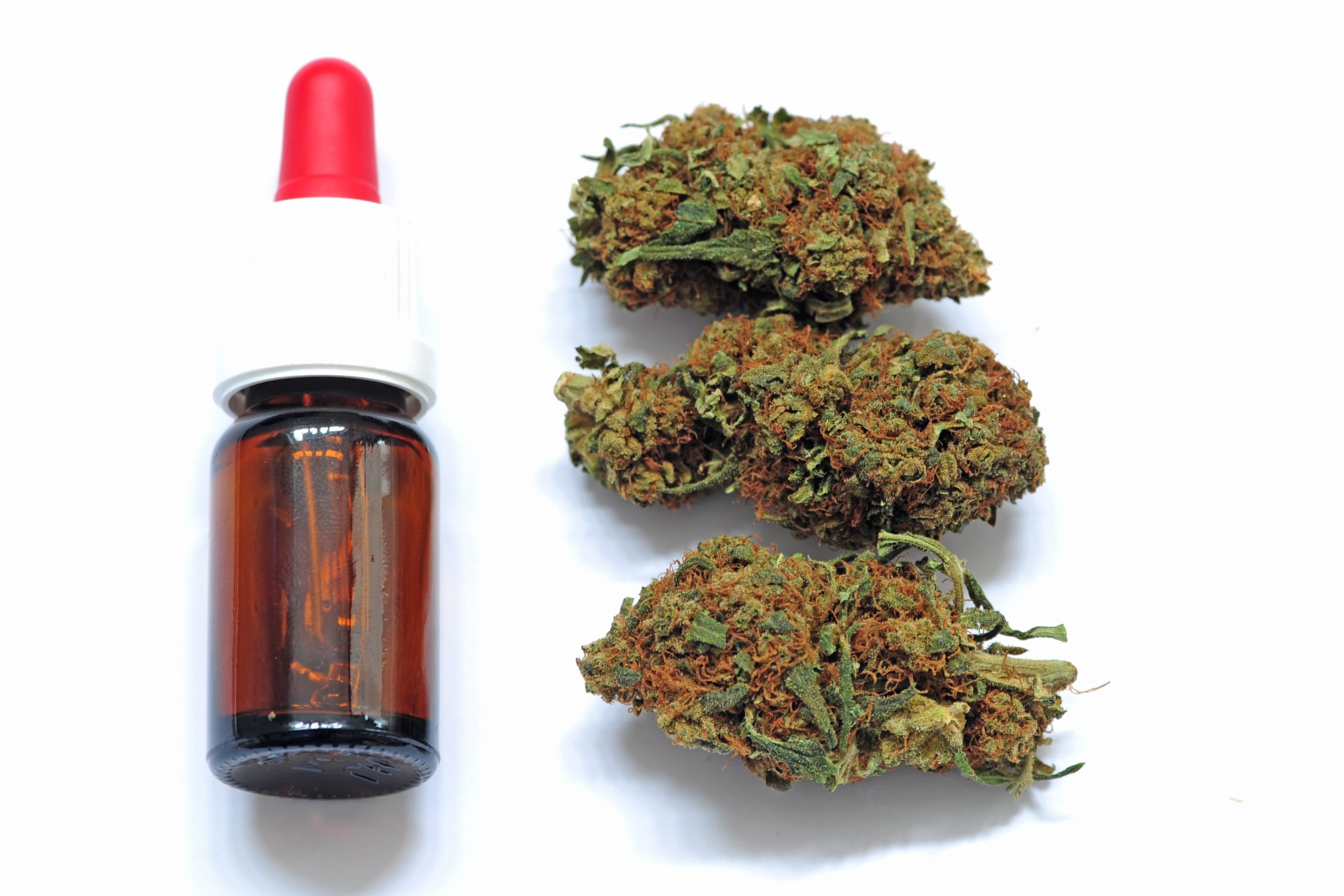
Microdosing By Smoking & Vaping
It’s very difficult to microdose through smoking. There are so many factors that can affect how much THC enters the system with this format. Some marijuana strains are more potent than others, you may hold the breath for longer or shorter durations, and the volume of smoke you inhale with each breath can vary as well.
In general, you only need about one puff to get a microdose of THC from marijuana of average quality. Don’t hold your breath for very long or take a particularly deep breath either.
Some vape pens make microdosing easier because they’re preset to deliver a very specific dose of THC per puff — usually around 0.5 mg per puff. But keep in mind, the dose of inhaled THC is much lower than edible forms — so start with around 0.5 or 1 mg and see how it affects you before increasing the dose in the future.
Best THC Vaporizers For Microdosing:
Can You Microdose CBD?
The short answer is yes, but there isn’t much benefit to doing so.
I’ve seen some reports of people microdosing CBD (cannabidiol), and while there’s definitely evidence to support the idea that lower doses of CBD offer benefits to the body — I wouldn’t classify this as being a “microdose.” This is because microdoses imply psychoactive effects, which is something CBD simply doesn’t have.
You could take a dose as high as 50 mg of CBD and still won’t experience any changes in perception or awareness.
With that said, low doses of CBD can still offer benefits towards mitigating anxiety, pain, and low mood states. However, there isn’t any evidence to suggest these lower doses are inherently “better” than higher doses.
Many people do find that adding an equal dose of CBD with their THC microdose can improve the effects. Both of these cannabinoids have plenty of synergy together — and taking them together has consistently shown greater results than either compound on its own.
Learn More About CBD Dosage with Our CBD Dosage Calculator.
How Often Should I Microdose Marijuana?
Most people who microdose THC take their dose sometime in the morning on a daily basis. Some people will take a second dose later in the afternoon as well.
It’s important to space each dose out by several hours to avoid going over the line into the psychoactive dosage range.
This is different from conventional microdosing of psychedelics, which usually involves only one dose every three days.
For your first time, I recommend taking your microdose on a day where you don’t have to drive or do any work — just in case you feel the psychoactive effects. Once you know what dose to take and how it affects your body individually, you can feel more confident to take your microdose at work or school — knowing you’re not going to feel the psychoactive effects.
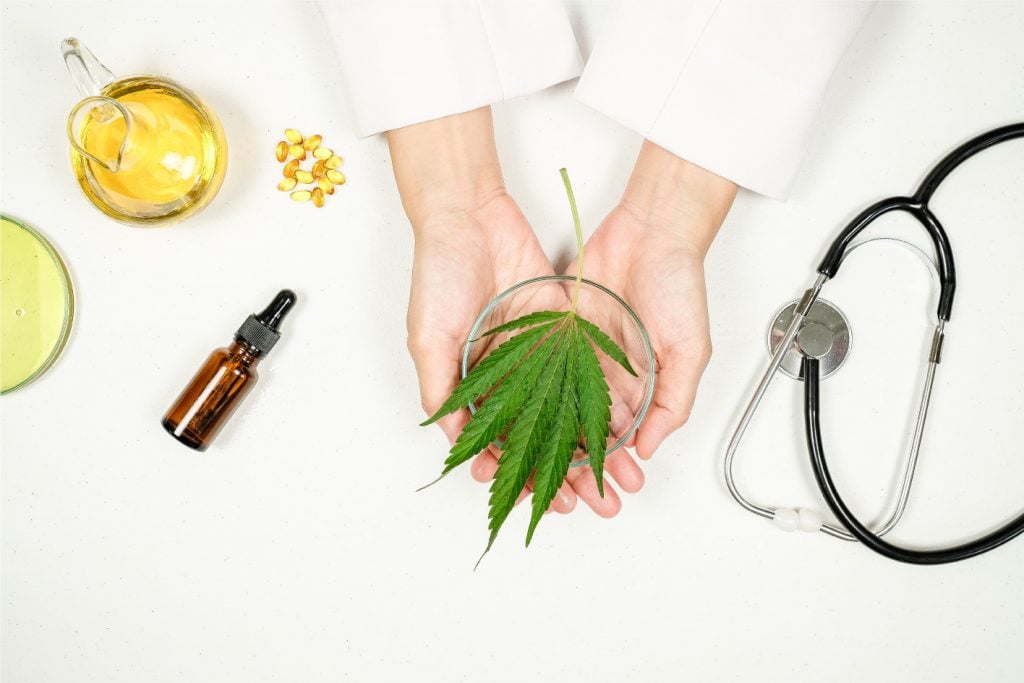
Marijuana Microdose Research
A study published in 2017 reported that a 7.5 mg dose of THC had a greater impact on alleviating stress than a 12.5 mg dose [1]. Patients in this study reported fewer improvements in other areas as well, including mood and emotional stability.
Other studies have shown that a pharmaceutical preparation of THC and CBD called Sativex® or Nabiximols had a greater impact on treating cancer-related pain at the lower dose (1–4 sprays/day), compared to the high dose (11–16 sprays/day) [2].
Two recent studies on mice found that long-term low-dose THC treatment restored signs of cognitive decline [3,4].
Related: The Best CBD:THC Ratio for Multiple Sclerosis, Arthritis & Fibromyalgia.
Can Microdosing THC Make Me Fail A Drug Test?
The simple answer to this question is yes — although it’s unlikely.
Drug tests these days are very sensitive. They can detect even trace amounts of a substance in the bloodstream. This is why a full-spectrum CBD oil that contains only very small amounts of THC can still technically trigger a positive on a drug test.
If you took your microdose on the same day as the drug test, you’re almost guaranteed to fail.
If you took the microdose a few days before, your chances are significantly less — especially if you don’t microdose or use marijuana on a regular basis.
Using THC products consistently causes it to build up in the body and can take several weeks to fully flush from the bloodstream.
However, if you’ve used just a handful of doses in a row, THC and other cannabinoids are cleared from the body within a matter of just a few days.
If you’re subject to drug tests at work, and you won’t get at least 30 days’ notice before the date of the test, it’s not a good idea to use microdoses of THC for any reason.
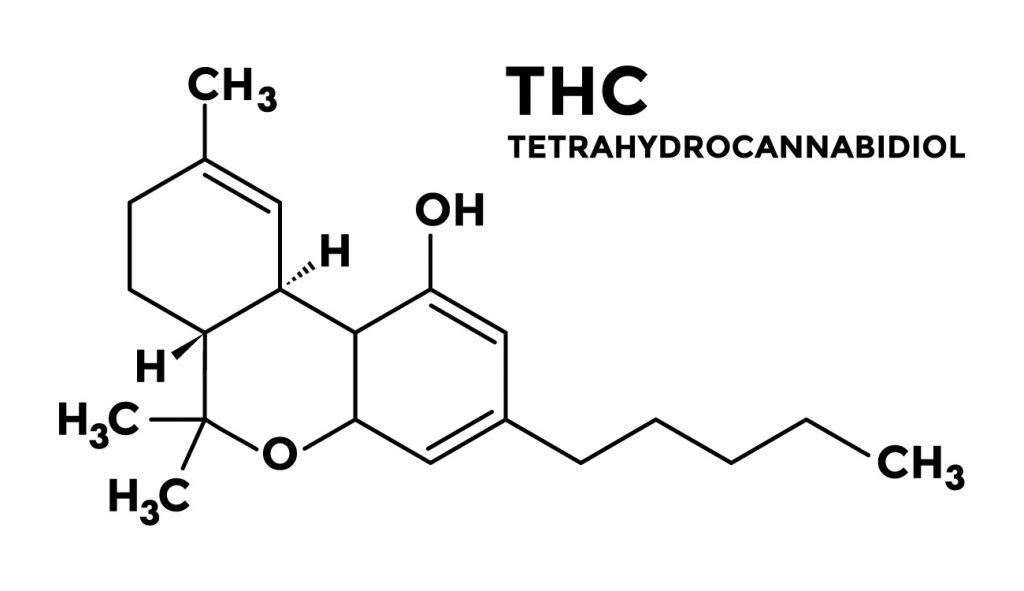
Final Thoughts: Microdosing THC & Marijuana
Microdosing isn’t a new concept — it’s been talked about for years in the context of psychedelic substances as a way to get many of the benefits without the hallucinations and other perceptual changes that come along with them.
Today, many people are starting to talk about microdoses for marijuana as well. Several studies have already shown that not only do low doses offer many of the same benefits; in some cases, the effects are even better.
There’s an interesting phenomenon that happens when you go from a low dose of THC to a higher dose. Low doses tend to be more relaxing and work better for alleviating anxiety or insomnia.
As the dose increases, eventually, a threshold is crossed that completely flips the effect profile — THC becomes more stimulating instead, which can actually cause anxiety or insomnia, instead of solving it.
The easiest way to start microdosing THC yourself is to look for a low-dose tincture (preferably one that contains a 1:1 ratio of THC to CBD) or low-dose gummies or edibles. Aim for a dose somewhere between 2.5 and 5 mg of THC and consider tweaking the dose once you know how your body reacts to it.
References
- Childs, E., Lutz, J. A., & de Wit, H. (2017). Dose-related effects of delta-9-THC on emotional responses to acute psychosocial stress. Drug and alcohol dependence, 177, 136-144.
- Portenoy, R. K., Ganae-Motan, E. D., Allende, S., Yanagihara, R., Shaiova, L., Weinstein, S., … & Fallon, M. T. (2012). Nabiximols for opioid-treated cancer patients with poorly-controlled chronic pain: a randomized, placebo-controlled, graded-dose trial. The Journal of Pain, 13(5), 438-449.
- Bilkei-Gorzo, A., Albayram, O., Draffehn, A., Michel, K., Piyanova, A., Oppenheimer, H., … & Zimmer, A. (2017). A chronic low dose of Δ 9-tetrahydrocannabinol (THC) restores cognitive function in old mice. Nature Medicine, 23(6), 782.
- Sarne, Y. (2019). Beneficial and deleterious effects of cannabinoids in the brain: the case of ultra-low-dose THC. The American journal of drug and alcohol abuse, 45(6), 551-562.

